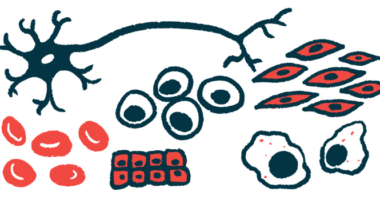Gene activity altered in certain brain cells of people with C9-ALS
Mutations in C9ORF72 gene are most common known genetic cause of ALS

The genetic activity of certain brain cells, namely excitatory neurons and astrocytes, is altered in people with amyotrophic lateral sclerosis (ALS) caused by mutations in the C9ORF72 gene, a study reports.
The data reveal the distinct molecular mechanisms that may lead to disease progression in people with such mutations, which may help develop improved treatments.
The study, “Divergent single cell transcriptome and epigenome alterations in ALS and FTD patients with C9orf72 mutation,” was published in Nature Communications.
While the causes of ALS are poorly understood, genetic mutations are a known cause in at least some cases. Mutations in the C9ORF72 gene are the most common known genetic cause of ALS.
Mutations in C9ORF72 also can cause frontotemporal dementia (FTD), which is closely connected biologically to ALS. FTD and ALS both feature similar changes in the brain, and it’s not uncommon for someone to be affected by both disorders simultaneously.
In this study, a team of U.S. scientists analyzed brain tissue collected after death from six people with C9ORF72-related ALS (C9-ALS), five with C9ORF72-related FTD (C9-FTD), and six without a neurological disease to learn how disease-causing mutations in C9ORF72 alter the activity of different types of cells in the brain.
Alterations in gene activity in excitatory neurons, astrocytes
The researchers conducted single-cell transcriptome profiling to determine the gene expression in thousands of individual cells throughout two regions of the brain — the motor cortex, which helps control movement, and the frontal cortex, which is involved in coordinating complex cognition. Gene expression is a measure of which genes are “turned on” or “turned off” inside the cell. It can provide clues about cells’ biological activity.
Compared with people without any neurological disease, those with C9-ALS had marked changes in gene activity primarily in two cell types: excitatory neurons, nerve cells responsible for sending signals that activate other nerve cells, and astrocytes, which are star-shaped cells in the brain that help support nerve function.
Specifically, astrocytes in C9-ALS patients showed changes in gene activity indicative of greater inflammatory activity, such as increased expression of the gene GFAP.
In excitatory neurons, many genes needed for nerve cells to do their specialized jobs of sending electrical signals showed notably reduced expression. At the same time, there was increased activation of genes related to energy production and protein manufacturing, biological processes that are the bare minimum for any cell to stay alive.
These changes in excitatory neurons’ gene activity might reflect the cells struggling to survive as they become more damaged by ALS-driving disease processes, the researchers said.
They noted it wasn’t possible to conclude whether the changes are specifically driven by C9ORF72 mutations or are more general markers of nerve damage toward the end of a person’s life with ALS, since the data were collected after the patients died.
Gene activity data of nerve cells from brains with FTD wasn’t of enough quality to analyze reliably, but changes were seen in the gene activity of astrocytes in these patients.
“Our global analyses of gene expression differences across donors showed particularly pronounced disruption of [gene expression] in excitatory neurons in C9-ALS and astrocytes in both C9-ALS and C9-FTD,” the scientists concluded.
These changes in gene activity were accompanied by alterations in cells’ epigenetic profiles. Epigenetics refers to the physical ways DNA is packaged inside a cell, which can have a profound effect on gene activity. For instance, DNA that’s more active is packaged in a way so it’s easier to access.
Fully understanding these molecular differences in brain cells “will be essential for developing targeted disease-modifying therapies” for these diseases, the researchers said.







